It has been a wet spring and early summer in northern Colorado. Many days have had rain. I measured a single day's rain at 1.1", the wettest single day in the 5 years I've had a backyard rain gauge. Denver had its 4th wettest May and wettest June ever recorded. Denver has exceeded its average annual rainfall with half the year to go. I'm 50 miles to the north and we don't get quite the same storms, but we're very, very wet too.
In consequence, the countryside is green and plants everywhere are thicker, taller, and flowering more.
 |
| Devil's Backbone |
The grass along the trail was about 1/3 taller than usual, with lots of stalks and flowerheads.
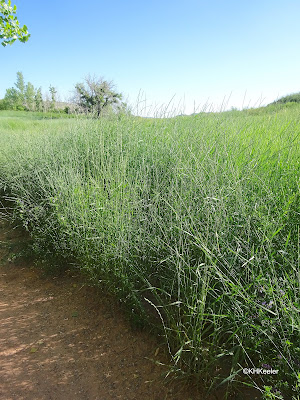 |
Plants of many species seemed loaded with flowers.
This is how I usually see prairie spiderwort, Tradescantia occidentalis,
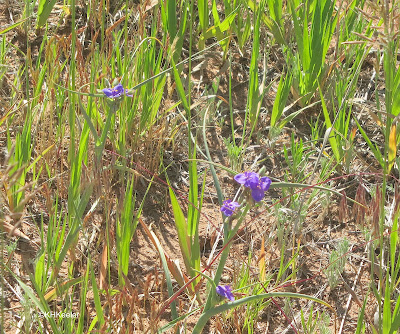 |
| prairie spiderwort, Tradescantia occidentalis, 2014 |
This is how prairie spiderwort plants look this year (a single plant):
 |
| prairie spiderwort, Tradescantia occidentalis |
The blue larkspurs (Delphinium, several species) formed large splashes of color, not the one or two shoots I was used to spotting:
 |
| Larkspurs on the hillside this year. |
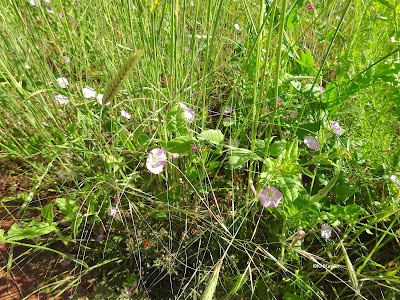 |
| field bindweed, Convolvulus arvensis |
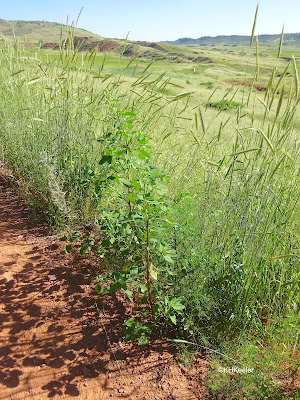 |
| tall Chenopodium amid the grasses |
 |
| needle and thread grass, Hesperostipa comata |
Most ecosystems are limited by water (because the plants expand until water is limiting). The Front Range with about 15" of rain a year is usually dry to very dry by midsummer. This year is highly unusual with water enough for all the plants, so we have unusual levels of growth and flowering.
It is also a great year for some insects
Here, aphids are consuming the yucca flowers. If you look carefully, you can see two ladybugs hunting the aphids.
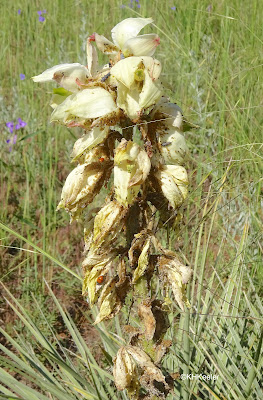 |
| yucca with aphids and ladybugs |
I don't recognize either the plant or the beetle here, but clearly the big new leaves of the plant are delicious:
 |


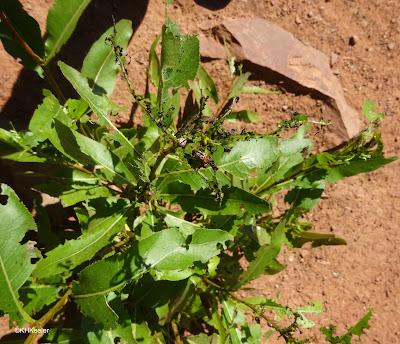
This comment has been removed by the author.
ReplyDeleteLove the Hesperostipa comata. The tall grasses might be Thinopyrum obtusiflorum, and the last might be Hordeum brachyantherum, though I could be wrong.
ReplyDelete